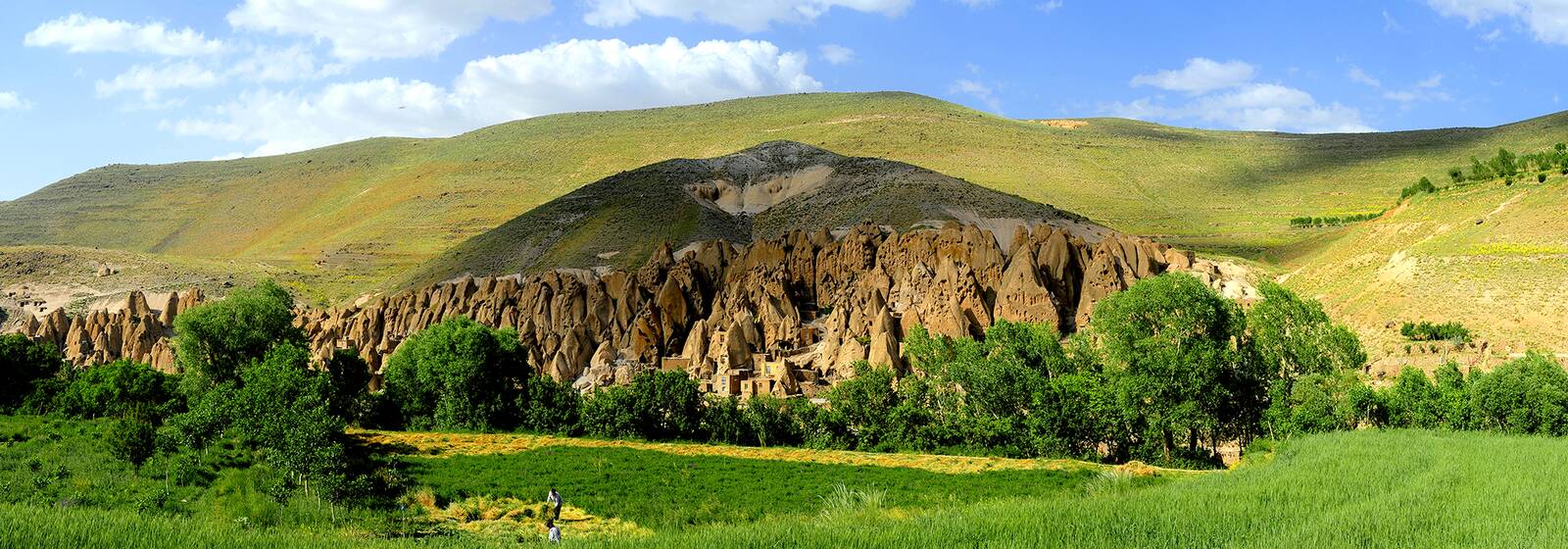
Kandovan village
Kandovan is an astonishing village located on the mountain flank of Sultan Daghi, Sabalan Mountain, located in East Azerbaijan Province, Iran. Kandovan Village is famous for its wonderful rocky architecture which is the result of volcanic activities and hand-carved structures. The inhabitants, basically, carved every room of the cliff houses like kitchens, halls, and even pens out of stone to make windows for the rooms and later, to decorate them with colorful glasses.
There are two other cliff villages with similar structures in Turkey’s Cappadocia and US’s Manitou Cliff Dwellings in Colorado. However, these two cliff villages are not inhabited and they leave Kandovan as the only inhabited cliff village in the world. Maymand Village in Iran, though, is another valley in cave dwellings carved out of the soft rock. There are sharp pyramidal cliffs with the holes on their irregular surfaces in this village which have been created due to volcano eruption in the summer region of the Sahand Mountain Range. The cliffs have shaped hive cells which are also known as Karan. Geographical studies show the cliffs ages range from 700 to 1500 years.
Kandovan village has cold and long winter, thus this place is considered as a safe shelter from hot and cold weather and also enemies’ invasion. Generally, Most of these Karans has two floors and in some cases, three and even four floors that they are not related to each other from the inside. The rural people have created the house, home range, warehouse and workshop for residential use within these cliffs. Multi-Story houses and stairways generally intended to connect each floor to another. The village has every facility from public bath, school, mosque and mill. Mosque Karan is one of the largest Karans in the village.
Mineral water springs with the lowest percentage of contamination are basically used for the treatment of kidney diseases. Unique architecture of houses, lush and beautiful valleys, pleasant weather, organic dairy and honey and crafts of the region have turned this area into one of the tourist regions of Iran.
